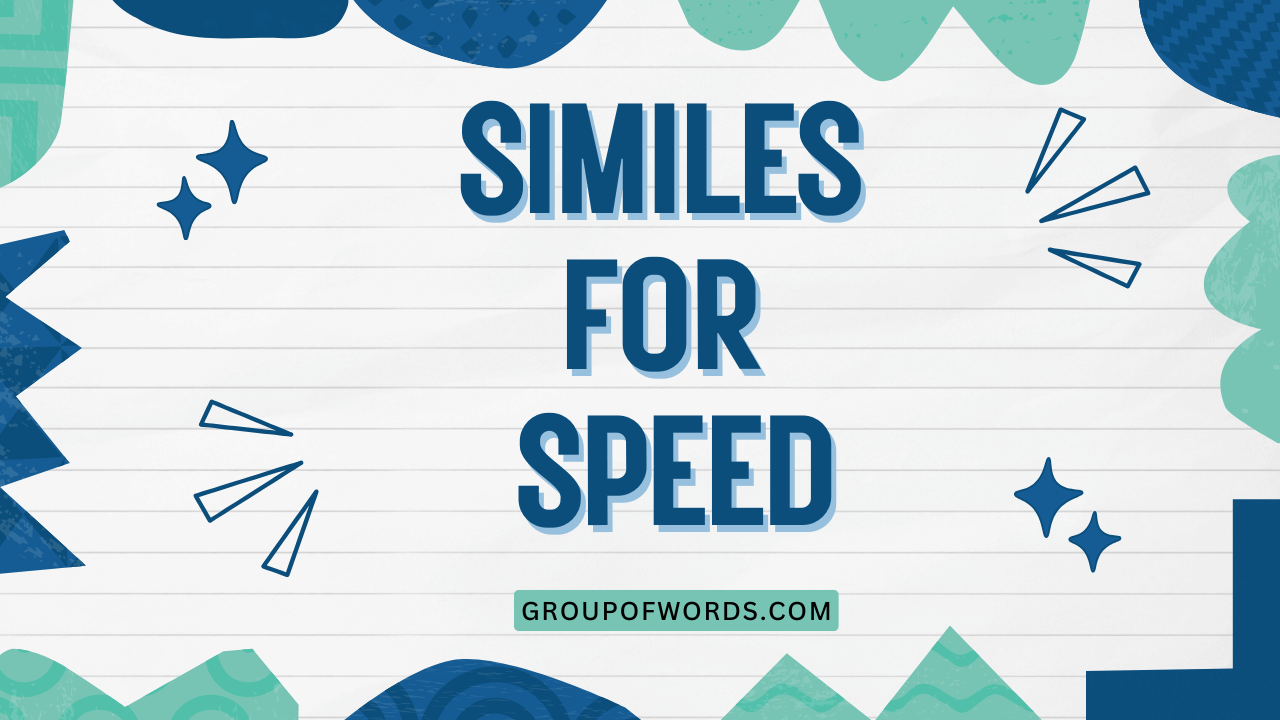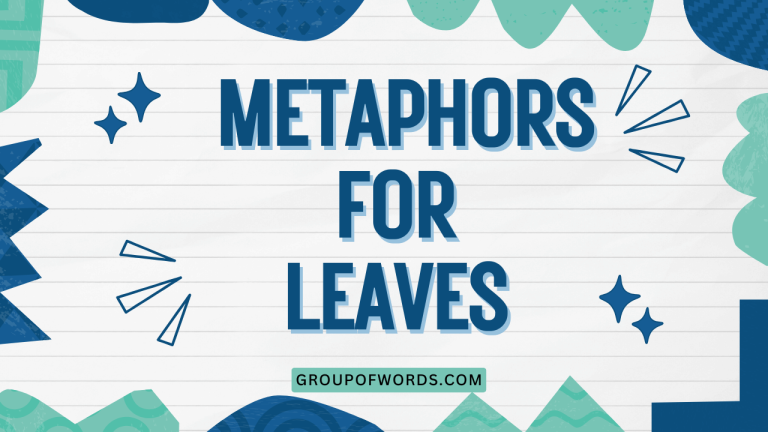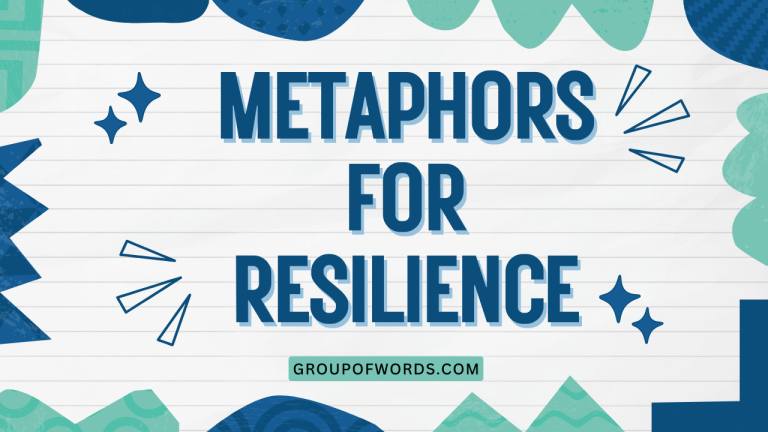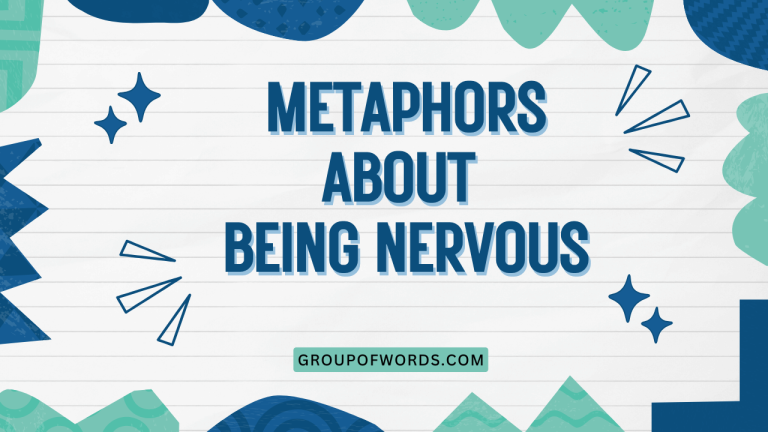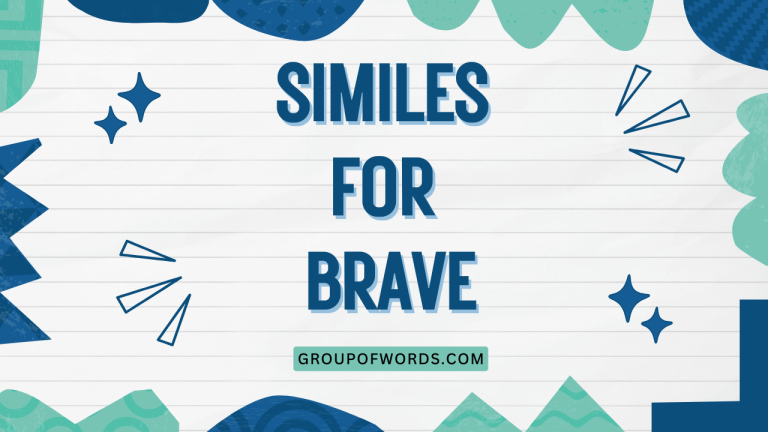Similes for Speed: Mastering Figurative Language
Understanding similes, particularly those related to speed, is crucial for enhancing both your writing and comprehension skills. Similes add color and vividness to language, allowing you to paint a more compelling picture for your audience.
By mastering similes for speed, you’ll be able to describe motion and velocity with greater precision and impact. This skill is beneficial for students, writers, and anyone looking to improve their command of the English language.
This article provides a comprehensive guide to similes for speed, covering their definition, structure, usage, and common pitfalls. Through numerous examples, practice exercises, and detailed explanations, you’ll gain a solid understanding of how to effectively use similes to describe speed in various contexts.
Whether you’re a beginner or an advanced learner, this resource will help you master this important aspect of figurative language.
Table of Contents
- Definition of Similes for Speed
- Structural Breakdown of Speed Similes
- Types of Speed Similes
- Examples of Similes for Speed
- Usage Rules for Similes of Speed
- Common Mistakes with Speed Similes
- Practice Exercises
- Advanced Topics in Speed Similes
- Frequently Asked Questions
- Conclusion
Definition of Similes for Speed
A simile is a figure of speech that compares two unlike things using the words “like” or “as.” The purpose of a simile is to create a vivid and relatable image in the reader’s mind by drawing a parallel between something familiar and something less so. Similes for speed specifically compare the rate of motion of one thing to another, often emphasizing how fast or slow something is moving.
In the context of English grammar, similes fall under the broader category of figurative language, which also includes metaphors, personification, and hyperbole. They function as descriptive tools, adding depth and nuance to writing.
Understanding similes is essential for interpreting literature, crafting compelling narratives, and enhancing overall communication skills. They are particularly useful when precise measurements are unavailable or when a more evocative description is desired.
For example, instead of saying “He ran quickly,” you could use a simile to say “He ran as fast as a cheetah.” This comparison not only conveys the speed of the runner but also evokes a sense of power and agility associated with the cheetah.
Structural Breakdown of Speed Similes
The basic structure of a simile for speed follows a simple pattern: Subject + Verb + as/like + Object of Comparison. The subject is the thing being described, the verb indicates the action, and the object of comparison is the thing to which the subject’s speed is being compared. “As” and “like” act as the connectors, establishing the comparison.
The object of comparison is crucial because it determines the effectiveness of the simile. A well-chosen object will resonate with the reader and create a clear image of the speed being described.
For instance, comparing a car’s speed to that of a snail would emphasize its slowness, while comparing it to a rocket would highlight its quickness.
Let’s break down the structure with some examples:
- She (Subject) moved (Verb) as (Connector) quick as lightning (Object of Comparison).
- The wind (Subject) rushed (Verb) like (Connector) a hurricane (Object of Comparison).
- He (Subject) flew (Verb) as (Connector) swift as an arrow (Object of Comparison).
Understanding this structure will help you create your own similes for speed and analyze those used by other writers.
Types of Speed Similes
Similes for speed can be categorized based on the object of comparison used. Here are some common categories:
Animal-Based Similes
These similes compare speed to that of various animals, often to emphasize agility, swiftness, or slowness. Examples include “as fast as a cheetah” or “as slow as a snail.”
Object-Based Similes
These similes use objects to describe speed, such as “as quick as a flash” or “as slow as molasses.” The objects are chosen for their inherent association with speed or lack thereof.
Natural Phenomenon-Based Similes
These similes reference natural events, like “as fast as lightning” or “as slow as a glacier.” The natural phenomena provide a powerful and easily understood comparison.
Vehicle-Based Similes
These similes use vehicles to describe speed, such as “as fast as a race car” or “as slow as a horse-drawn carriage.” The type of vehicle indicates the relative speed being conveyed.
Examples of Similes for Speed
Here are extensive examples of similes for speed, categorized by the type of object of comparison.
Animal-Based Similes
Animal-based similes are powerful tools for vividly describing speed, leveraging our innate understanding of animal movements. The following table provides a wide range of examples, from the lightning-fast cheetah to the deliberately slow tortoise, enriching your descriptive language with a touch of the natural world.
| Simile | Description |
|---|---|
| As fast as a cheetah | Extremely rapid movement. |
| As slow as a snail | Very slow movement. |
| As quick as a hummingbird | Rapid and agile motion. |
| As swift as a swallow | Graceful and fast flight. |
| As sluggish as a sloth | Extremely slow and lethargic movement. |
| As nimble as a squirrel | Quick and agile movement. |
| As slow as a tortoise | Deliberately slow pace. |
| As fast as a greyhound | Very fast running. |
| As quick as a cat | Sudden and agile movement. |
| As slow as a caterpillar | Slow and crawling movement. |
| As fast as a falcon | Rapid and precise flight. |
| As slow as a worm | Very slow and wriggling movement. |
| As quick as a mouse | Small and fast movement. |
| As swift as an eagle | Powerful and fast flight. |
| As slow as a beetle | Extremely slow, crawling movement. |
| As fast as a racehorse | Incredibly fast running, often in competition. |
| As quick as a darting fish | Rapid and unpredictable movement in water. |
| As swift as a soaring hawk | Smooth, fast, and elevated flight. |
| As sluggish as a hibernating bear | Extremely slow and inactive, typical of hibernation. |
| As nimble as a mountain goat | Agile and sure-footed movement on steep terrain. |
| As slow as a herd of turtles | A group moving at an extremely slow pace. |
| As fast as a striking cobra | Sudden and extremely rapid attack. |
| As quick as a spider spinning its web | Deft and rapid construction of a web. |
| As swift as migrating birds | Fast and determined flight over long distances. |
| As sluggish as a molting crab | Slow and awkward movement during molting. |
| As nimble as a gecko on a wall | Agile and adhesive movement on vertical surfaces. |
| As slow as a line of ants marching | A group moving slowly and methodically. |
Object-Based Similes
Object-based similes offer a diverse range of comparisons to describe speed, drawing from everyday items to create relatable imagery. These similes can effectively convey both rapid and slow movements, using familiar objects to illustrate the pace.
The following examples use items such as light, shadows, and even sticky substances to paint a vivid picture of velocity.
| Simile | Description |
|---|---|
| As quick as a flash | Extremely rapid; instantaneous. |
| As slow as molasses | Very slow and viscous. |
| As fast as greased lightning | Extremely fast and slippery. |
| As slow as drying paint | Almost imperceptibly slow. |
| As quick as a wink | Very fast; almost immediate. |
| As slow as a dripping faucet | Slow and continuous. |
| As fast as a bullet | Extremely fast and direct. |
| As slow as a rusty hinge | Slow and creaky. |
| As quick as a shadow | Rapid and elusive. |
| As slow as hardening cement | Gradually becoming slower. |
| As fast as a speeding train | Very fast and unstoppable. |
| As slow as a melting glacier | Extremely slow and gradual. |
| As quick as a thought | Instantaneous; without delay. |
| As slow as a dial-up connection | Painfully slow internet speed. |
| As fast as a dropped coin | Rapid and unstoppable fall. |
| As slow as a record skipping | Repetitive and slow movement. |
| As quick as the beat of a drum | Fast and rhythmic. |
| As slow as a film reel turning | Slow and methodical progress. |
| As fast as the blink of an eye | Extremely rapid and almost imperceptible. |
| As slow as waiting for water to boil | Time seems to stretch when waiting. |
| As quick as a camera shutter | Instantaneous and precise action. |
| As slow as sand through an hourglass | Gradual and relentless passage of time. |
| As fast as a rolling stone | Rapid and continuous motion. |
| As slow as a sticky toffee | Viscous and reluctant movement. |
| As quick as the click of a mouse | Fast and responsive action. |
| As slow as watching grass grow | Extremely slow and uneventful. |
Natural Phenomenon-Based Similes
Natural phenomenon-based similes tap into the power and grandeur of the natural world to describe speed. These similes use elements like lightning, wind, and geological processes to convey a sense of velocity that is both vivid and impactful.
Whether emphasizing the suddenness of lightning or the gradual pace of a glacier, these comparisons add depth to descriptive writing.
| Simile | Description |
|---|---|
| As fast as lightning | Extremely rapid and sudden. |
| As slow as a glacier | Extremely slow and gradual. |
| As quick as a gust of wind | Sudden and fleeting. |
| As slow as a river eroding rock | Gradual and persistent. |
| As fast as a meteor shower | Rapid and numerous. |
| As slow as sediment settling | Gradual and sinking. |
| As quick as a sunbeam | Rapid and bright. |
| As slow as a mountain forming | Extremely slow and long-term. |
| As fast as a tsunami | Devastatingly fast and powerful. |
| As slow as stalactites growing | Extremely slow and incremental. |
| As quick as a flash flood | Sudden and overwhelming. |
| As slow as continental drift | Incredibly slow movement of landmasses. |
| As fast as wildfire spreading | Rapid and uncontrollable. |
| As slow as petrification | Extremely slow process of organic matter turning to stone. |
| As quick as heat lightning | Fast and silent electrical discharge. |
| As slow as coral reef growth | Very slow and steady accumulation. |
| As fast as a dust devil | Rapid, swirling wind. |
| As slow as the Earth’s rotation | Slow but constant and predictable. |
| As quick as a shooting star | Fleeting and fast. |
| As slow as fossilization | Extremely long and gradual process. |
| As fast as a volcanic eruption | Sudden and explosive. |
| As slow as the changing of seasons | Gradual and predictable. |
| As quick as an avalanche | Rapid and overwhelming descent. |
| As slow as the weathering of stone | Extremely slow and gradual erosion. |
| As fast as a gale | Strong and rapid wind. |
| As slow as a distant star moving across the sky | Extremely slow and almost imperceptible motion. |
Vehicle-Based Similes
Vehicle-based similes provide a relatable way to describe speed using various modes of transportation. From the swiftness of a race car to the slowness of a horse-drawn carriage, these similes offer a practical comparison that most people can easily visualize.
This approach is effective in conveying the relative speed of an object or action, making it a valuable tool in descriptive writing.
| Simile | Description |
|---|---|
| As fast as a race car | Extremely fast and competitive. |
| As slow as a horse-drawn carriage | Slow and traditional. |
| As quick as a jet plane | Rapid and long-distance travel. |
| As slow as a bicycle uphill | Slow and labored movement. |
| As fast as a rocket | Extremely fast and powerful ascent. |
| As slow as a rowboat drifting | Slow and aimless movement. |
| As quick as a speedboat | Fast and agile on water. |
| As slow as a train chugging uphill | Slow and struggling movement. |
| As fast as a motorcycle | Fast and maneuverable. |
| As slow as a wagon with a broken wheel | Slow and difficult movement. |
| As quick as a drone | Fast and agile remote-controlled flight. |
| As slow as a barge on a canal | Slow and steady progress. |
| As fast as a monorail | Rapid and efficient urban transport. |
| As slow as a donkey cart | Very slow and plodding. |
| As quick as a Formula 1 car | Extremely fast and technologically advanced. |
| As slow as a stagecoach on a bumpy road | Uncomfortable and slow journey. |
| As fast as a bullet train | High-speed rail travel. |
| As slow as a tractor plowing a field | Slow and methodical work. |
| As quick as a hovercraft | Fast and smooth over water and land. |
| As slow as a paddle steamer | Leisurely and unhurried pace. |
| As fast as a fighter jet | Incredibly fast and agile aerial combat. |
| As slow as a cable car ascending a mountain | Gradual and scenic climb. |
| As quick as an ambulance rushing to an emergency | Urgent and rapid response. |
| As slow as a garbage truck making its rounds | Stop-and-go and relatively slow. |
| As fast as a self-driving car on the highway | Efficient and moderately fast automated travel. |
| As slow as a rickshaw being pulled through crowded streets | Slow and weaving motion. |
Usage Rules for Similes of Speed
Using similes for speed effectively requires adhering to certain rules to ensure clarity and impact. Understanding these guidelines will help you craft similes that resonate with your audience and enhance your writing.
1. Choose a Relevant Comparison: The object of comparison should be logically related to the speed you’re describing. For example, comparing a slow-moving object to a snail is appropriate because snails are known for their slowness. Conversely, comparing it to a cheetah would be illogical. Ensure the qualities of the object of comparison align with the speed you want to convey.
2. Consider Your Audience: The effectiveness of a simile depends on whether your audience understands the comparison. If you’re writing for a general audience, choose comparisons that are widely known. If you’re writing for a specialized audience, you can use more specific or technical comparisons. A simile about the speed of a quantum computer might be lost on someone unfamiliar with the subject.
3. Avoid Clichés: While some similes are common, overuse can make your writing sound unoriginal. Try to come up with fresh and creative comparisons. Instead of saying “as fast as lightning,” consider “as fast as a data packet across fiber optic cables.” Originality makes your writing more engaging.
4. Maintain Consistency: Ensure that the simile fits the overall tone and style of your writing. A humorous simile might be out of place in a serious or formal context. Pay attention to the context and choose similes that complement the mood and purpose of your writing.
5. Be Concise: Similes should be brief and to the point. Avoid overly complex or convoluted comparisons. The best similes are those that create a clear image with just a few words. Keep your similes succinct to maintain readability.
6. Use Sensory Details: When possible, incorporate sensory details into your similes to make them more vivid and engaging. For example, instead of saying “as fast as a car,” you could say “as fast as a car roaring down the highway.” Sensory details enhance the reader’s experience.
7. Think about the Context: The context in which you use a simile is crucial. The same simile can have different effects depending on the situation. Consider the emotional impact you want to create and choose your similes accordingly. A simile used in a love poem will differ from one used in a scientific report.
8. Ensure Clarity: The primary goal of a simile is to clarify or enhance understanding. If the comparison is confusing or unclear, it defeats the purpose. Make sure your similes are easy to understand and directly contribute to the meaning of your writing. Ambiguity should be avoided.
9. Vary Your Similes: Using the same simile repeatedly can become monotonous. Try to vary your comparisons to keep your writing fresh and interesting. A diverse range of similes will demonstrate your command of language and captivate your readers.
10. Proofread Carefully: Always proofread your writing to ensure that your similes are grammatically correct and make sense in the context. A misplaced word or incorrect comparison can undermine the effectiveness of your writing. Attention to detail is essential.
Common Mistakes with Speed Similes
Even experienced writers can make mistakes when using similes for speed. Recognizing these common errors and understanding how to correct them is crucial for effective communication.
Here are some frequent pitfalls to avoid:
1. Illogical Comparisons: This occurs when the object of comparison doesn’t logically relate to the speed being described. For example:
- Incorrect: The turtle ran as fast as a rocket.
- Correct: The turtle moved as slow as a snail.
2. Clichéd Similes: Overusing common similes can make your writing sound unoriginal and predictable. For example:
- Clichéd: He ran as fast as lightning.
- Improved: He ran as fast as a cheetah chasing its prey.
3. Unclear Comparisons: When the object of comparison is obscure or unfamiliar, the simile loses its effectiveness. For example:
- Unclear: She moved as quick as a tachyon. (Unless the audience understands particle physics)
- Improved: She moved as quick as a hummingbird’s wings.
4. Grammatical Errors: Incorrect use of “like” or “as” can lead to grammatical errors and confusion. For example:
- Incorrect: He was fast like a train.
- Correct: He was as fast as a train.
5. Overly Complex Similes: A simile should be concise and to the point. Overly complex comparisons can be confusing and detract from the writing. For example:
- Overly Complex: The ball traveled through the air with the velocity akin to a projectile launched from a high-powered railgun.
- Improved: The ball flew as fast as a bullet.
6. Inconsistent Tone: Using a simile that doesn’t fit the overall tone of the writing can be jarring. For example, using a humorous simile in a serious context.
- Inconsistent: The situation was dire, and the clock ticked as slow as molasses. (Inappropriate levity)
- Improved: The situation was dire, and the clock ticked as slow as a death knell.
7. Misunderstanding “Like” vs. “As”: While often interchangeable, there are nuances. “As” is used in comparisons where the qualities are equal, while “like” suggests similarity but not exact equivalence.
- Incorrect: He eats like a bird (implying he *is* a bird).
- Correct: He eats like a bird (implying he eats a small amount, similar to a bird).
8. Lack of Context: Using a simile without providing sufficient context can leave the reader confused. Ensure the context makes the comparison clear.
- Unclear: It went by as fast as a blur. (What went by?)
- Improved: The race car went by as fast as a blur.
9. Redundancy: Avoid using similes that simply repeat information already conveyed in the sentence. The simile should add something new or enhance the description.
- Redundant: He moved quickly as fast as a runner.
- Improved: He moved as fast as a cheetah.
10. Misuse of Figurative Language: Confusing similes with metaphors or other figures of speech can lead to errors. Remember that similes use “like” or “as” to make a direct comparison.
- Incorrect: He was a speeding bullet. (Metaphor)
- Correct: He was as fast as a speeding bullet. (Simile)
Practice Exercises
Test your understanding of similes for speed with these practice exercises. Each question requires you to either identify the correct simile or create one that fits the context.
Exercise 1: Identifying Similes
Identify the simile for speed in each sentence below:
| Question | Answer |
|---|---|
| 1. The car sped down the highway as fast as a rocket. | As fast as a rocket |
| 2. Time seemed to pass as slow as molasses in January. | As slow as molasses in January |
| 3. The cheetah ran with incredible velocity. | (No simile present) |
| 4. The news spread as quick as wildfire through the town. | As quick as wildfire |
| 5. The old man walked as slow as a snail across the street. | As slow as a snail |
| 6. The hummingbird’s wings fluttered like a blur. | Like a blur |
| 7. The river flowed gently downstream. | (No simile present) |
| 8. The sprinter exploded off the starting block as fast as a bullet. | As fast as a bullet |
| 9. The glacier moved at a glacial pace. | (No simile present, “glacial pace” is an idiom) |
| 10. The rumor traveled as quickly as a flash flood. | As quickly as a flash flood |
Exercise 2: Completing Similes
Complete the following sentences with an appropriate simile for speed:
| Question | Answer |
|---|---|
| 1. The train moved _______________. | as fast as a bullet train |
| 2. The project progressed _______________. | as slow as a snail |
| 3. The message arrived _______________. | as quick as a flash |
| 4. The wind howled _______________. | as fast as a hurricane |
| 5. The computer processed the data _______________. | as quick as lightning |
| 6. The elderly woman walked _______________. | as slowly as a tortoise |
| 7. The gossip spread _______________. | as fast as wildfire |
| 8. The children ran _______________. | as fast as the wind |
| 9. The shadow moved _______________. | as quick as a wink |
| 10. The lava flowed _______________. | as slow as molasses |
Exercise 3: Creating Similes
Write a sentence using a simile for speed to describe the following scenarios:
| Scenario | Example Answer |
|---|---|
| 1. A race car speeding around a track. | The race car sped around the track as fast as a rocket taking off. |
| 2. A snail moving across a leaf. | The snail crawled across the leaf as slow as a week in traffic. |
| 3. Information traveling on the internet. | Information travels on the internet as fast as a beam of light. |
| 4. A glacier moving down a valley. | The glacier moved down the valley as slow as the passing of ages. |
| 5. A cheetah chasing its prey. | The cheetah chased its prey as fast as a heat-seeking missile. |
| 6. An old computer loading a webpage. | The old computer loaded the webpage as slow as a dripping tap. |
| 7. A meteor streaking across the sky. | The meteor streaked across the sky as fast as a dream fading. |
| 8. A student finishing an exam. | The student finished the exam as quick as a hummingbird darting. |
| 9. A tree growing in the forest. | The tree grew in the forest as slow as the turning of the Earth. |
| 10. A rumor circulating through a school. | The rumor circulated through the school as fast as a swarm of bees. |
Advanced Topics in Speed Similes
For advanced learners, exploring more nuanced aspects of similes for speed can further enhance their writing skills. These advanced topics delve into the subtleties of simile construction, contextual appropriateness, and creative application.
1. Subverting Expectations: Intentionally using similes that contradict expectations can create a powerful effect. For example, describing something surprisingly fast as “slow as a snail” can highlight the unexpected nature of its speed through irony.
2. Layered Similes: Combining multiple similes within a single sentence or paragraph can add depth and complexity to your descriptions. This technique requires careful crafting to avoid confusion. For instance, “He moved as quick as lightning, striking like a viper, his actions as swift as a falcon diving.”
3. Cultural Context: Understanding the cultural connotations of different similes is crucial for avoiding unintended offense or misinterpretations. A simile that resonates in one culture may not have the same effect in another. For instance, a simile involving a specific animal may have different associations in different cultures.
4. Originality and Innovation: Pushing the boundaries of simile creation by inventing new and imaginative comparisons can set your writing apart. This requires a keen eye for detail and a creative mind. Instead of relying on common similes, strive to craft unique and memorable comparisons. “The code compiled as fast as neurons firing in a genius’ brain.”
5. Similes in Different Genres: The appropriateness of a simile depends on the genre of writing. Formal academic writing may require more precise and less figurative language, while creative writing allows for greater freedom and experimentation. Understanding genre conventions is essential for effective communication.
6. Use of Similes in Translation: When translating text, it’s important to consider whether a simile will have the same effect in the target language. Sometimes, a direct translation may not work, and a different simile may be needed to convey the same meaning. Linguistic and cultural sensitivity is key in translation.
7. Blending Similes with Metaphors: Combining similes with metaphors can create a rich tapestry of figurative language, adding depth and texture to your writing. However, this technique requires skill and precision to avoid creating mixed metaphors or confusing comparisons.
8. Similes in Spoken Language: The use of similes in spoken language can add color and emphasis to your communication. However, it’s important to choose similes that are appropriate for the context and audience. Overusing similes in conversation can sound contrived or unnatural.
Frequently Asked Questions
Here are some frequently asked questions about similes for speed to further clarify their usage and application:
1. What is the difference between a simile and a metaphor?
A simile is a comparison using “like” or “as,” while a metaphor directly states that one thing *is* another. For example, “He is as fast as a cheetah” (simile) versus “He is a cheetah on the track” (metaphor).
Similes make an explicit comparison, while metaphors imply a similarity.
2. Can a simile be too long or complex?
Yes, a simile should be concise and easy to understand. Overly long or complex similes can confuse the reader and detract from the writing.
Aim for clarity and brevity in your comparisons. A good simile enhances understanding, not obscures it.
3. How can I avoid using clichéd similes?
To avoid clichés, try to think of fresh and original comparisons. Instead of relying on common similes, consider the specific qualities you want to emphasize
about the subject you’re describing and brainstorm unique objects or scenarios that share those qualities.
The more specific and tailored your simile is to the context, the less likely it is to be a cliché.
4. Is it okay to mix similes in a single piece of writing?
Yes, it is perfectly acceptable to use a variety of similes in your writing to keep it engaging and descriptive. However, ensure that the similes are consistent in tone and style to avoid jarring the reader.
Mixing similes can showcase your creativity and command of language.
5. Can a simile compare something to itself?
No, a simile compares two *different* things that share a common quality. Comparing something to itself would be redundant and wouldn’t serve the purpose of providing a new perspective or enhancing understanding.
The essence of a simile is to draw a parallel between unlike things.
6. How do I know if my simile is effective?
An effective simile creates a clear and vivid image in the reader’s mind and enhances their understanding of the subject. Ask yourself if the comparison is logical, relatable, and adds something meaningful to the description.
If possible, get feedback from others to gauge their understanding and reaction to your simile.
7. Can similes be used in formal writing?
Yes, similes can be used in formal writing, but they should be used sparingly and with careful consideration. In formal contexts, it’s important to choose similes that are precise, objective, and contribute to the clarity of the writing.
Avoid overly figurative or emotional comparisons that may detract from the professional tone.
8. What role does context play in interpreting similes for speed?
Context is crucial in interpreting similes for speed because it provides the necessary background information to understand the comparison. The same simile can have different meanings or implications depending on the context in which it is used.
Consider the surrounding text, the tone of the writing, and the intended audience when interpreting a simile.
9. Are there any cultural considerations when using similes?
Yes, cultural considerations are important when using similes because different cultures may have different associations with certain objects or concepts. A simile that is effective in one culture may be confusing or offensive in another.
Be mindful of cultural differences and choose comparisons that are appropriate for your target audience.
10. How can I improve my ability to create effective similes?
To improve your ability to create effective similes, practice observing the world around you and making connections between seemingly unrelated things. Read widely, pay attention to how other writers use figurative language, and experiment with different comparisons.
The more you practice, the better you will become at crafting original and impactful similes.
Conclusion
Mastering similes for speed is an invaluable skill for anyone looking to enhance their descriptive writing. By understanding the structure, types, and usage rules of these comparisons, you can create vivid and engaging imagery that resonates with your audience.
Avoiding common mistakes and continuously practicing your craft will further refine your abilities, allowing you to paint compelling pictures with words.
From animal-based similes to those drawing on natural phenomena, the possibilities are endless. Embrace the challenge of finding fresh and original comparisons that capture the essence of speed in unique ways.
As you continue to explore and experiment with similes, you’ll discover the power of figurative language to transform your writing from ordinary to extraordinary. Keep practicing, keep observing, and keep creating!
